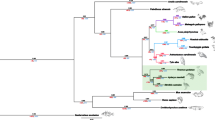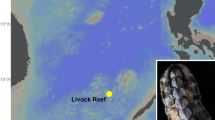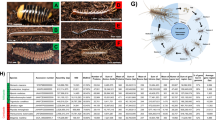Abstract
Vestigial organs are historical echoes of past phenotypes. Determining whether a specific organ constitutes a functional or vestigial structure can be a challenging task, given that distinct levels of atrophy may arise between and within lineages. The mammalian pineal gland, an endocrine organ involved in melatonin biorhythmicity, represents a classic example, often yielding contradicting anatomical observations. In Xenarthra (sloths, anteaters, and armadillos), a peculiar mammalian order, the presence of a distinct pineal organ was clearly observed in some species (i.e., Linnaeus’s two-toed sloth), but undetected in other closely related species (i.e., brown-throated sloth). In the nine-banded armadillo, contradicting evidence supports either functional or vestigial scenarios. Thus, to untangle the physiological status of the pineal gland in Xenarthra, we used a genomic approach to investigate the evolution of the gene hub responsible for melatonin synthesis and signaling. We show that both synthesis and signaling compartments are eroded and were probably lost independently among Xenarthra orders. Additionally, by expanding our analysis to 157 mammal genomes, we offer a comprehensive view showing that species with very distinctive habitats and lifestyles have convergently evolved a similar phenotype: Cetacea, Pholidota, Dermoptera, Sirenia, and Xenarthra. Our findings suggest that the recurrent inactivation of melatonin genes correlates with pineal atrophy and endorses the use of genomic analyses to ascertain the physiological status of suspected vestigial structures.

(Illustrations used elements from Servier Medical Art: https://smart.servier.com/)



Similar content being viewed by others
Data Availability
All data needed to evaluate the conclusions in the paper are present in the paper and/or the Electronic Supplementary Materials. Specifically, all analyzed genome assemblies (ESM_1) are publicly available on NCBI. Additional data related to this paper may be requested from the authors.
Code Availability
This paper does not report original code.
References
Albalat R, Cañestro C (2016) Evolution by gene loss. Nat Rev Genet 17:379–391. https://doi.org/10.1038/nrg.2016.39
Allmon WD, Ross RM (2018) Evolutionary remnants as widely accessible evidence for evolution: the structure of the argument for application to evolution education. Evol Educ Outreach 11:1. https://doi.org/10.1186/s12052-017-0075-1
Alves LQ, Alves J, Ribeiro R, Ruivo R, Castro LFC (2019) The dopamine receptor D5 gene shows signs of independent erosion in toothed and baleen whales. PeerJ 7:e7758. https://doi.org/10.7717/peerj.7758
Alves LQ, Ruivo R, Fonseca MM, Lopes-Marques M, Ribeiro P, Castro LFC (2020) PseudoChecker: an integrated online platform for gene inactivation inference. Nucleic Acids Res 48:W321–W331. https://doi.org/10.1093/nar/gkaa408
Alves LQ, Ruivo R, Valente R, Fonseca MM, Machado AM, Plön S, Monteiro N, García-Parraga D, Ruiz-Díaz S, Sánchez-Calabuig MJ, Gutiérrez-Adán A, Castro LFC (2021) A drastic shift in the energetic landscape of toothed whale sperm cells. Curr Biol. https://doi.org/10.1016/j.cub.2021.05.062 (In Press, Corrected Proof)
Attias N, Oliveira-Santos LGR, Fagan WF, Mourão G (2018) Effects of air temperature on habitat selection and activity patterns of two tropical imperfect homeotherms. Animal Behav 140:129–140
Axelrod J, Wurtman RJ, Winget CM (1964) Melatonin synthesis in the hen pineal and its control by light. Nature 201:1134
Benítez I, Aldana Marcos HJ, Affanni JM (1994) The encephalon of Chaetophractus villosus. A general view of its most salient features. Comun Biol 12:57–73
Camilo-Alves CSP, Mourão GM (2006) Responses of a specialized insectivorous mammal (Myrmecophaga tridactyla) to variation in ambient temperature. Biotropica 38:52–56
Castro LFC, Gonçalves O, Mazan S, Tay B-H, Venkatesh B, Wilson JM (2014) Recurrent gene loss correlates with the evolution of stomach phenotypes in gnathostome history. Proc R Soc B. https://doi.org/10.1098/rspb.2013.2669
Chiarello AG (1998) Activity budgets and ranging patterns of the Atlantic forest maned sloth Bradypus torquatus (Xenarthra: Bradypodidae). J Zool 246:1–10
Cronk Q (2009) The molecular organography of plants. Oxford University Press, Oxford
Darwin C (1859) On the origin of species by means of natural selection or the preservation of favoured races in the struggle of life. John Murray Press, London
Dexler H (1907) Zur Anatomie des Zentralnervensystems von Elephas indicus. Arb Neurol Inst Wien Univ 15:137–281
Di Blanco YE, Spørring KL, Di Bitetti MS (2017) Daily activity pattern of re-introduced giant anteaters (Myrmecophaga tridactyla): effects of seasonality and experience. Mammalia 81:11–21
Eisenberg JF, Redford KH (1999) Mammals of the Neotropics. Vol. 3, the central Neotropics: Ecuador, Peru, Bolivia, Brazil. University of Chicago Press, Chicago
Emerling CA, Widjaja AD, Nguyen NN, Springer MS (2017) Their loss is our gain: regressive evolution in vertebrates provides genomic models for uncovering human disease loci. J Med Genet 54:787–794. https://doi.org/10.1136/jmedgenet-2017-104837
Emerling CA, Springer MS, Gatesy J, Jones Z, Hamilton D, Xia-Zhu D, Collin M, Delsuc F (2021) Genomic evidence for the parallel regression of melatonin synthesis and signaling pathways in placental mammals. Open Res Europe 1:75. https://doi.org/10.12688/openreseurope.13795.1
Fang X, Seim I, Huang Z, Gerashchenko MV, Xiong Z, Turanov AA, Zhu Y, Lobanov AV, Fan D, Yim SH, Yao X, Ma S, Yang L, Lee S, Buffenstein R, Zhou X, Krogh A, Kim EB, Bronson RT, Sumbera R, Park TJ, Zhang G, Wang J, Gladyshev VN (2014) Adaptations to a subterranean environment and longevity revealed by the analysis of mole rat genomes. Cell Rep 8:1–11
Ferrari CC, Marcos HJA, Carmanchahi PD, Benítez I, Affanni JM (1998) The brain of the armadillo Dasypus hybridus. A general view of its most salient features. Biocell 22:123–140
Freitas LM, dos Santos OP, Santos ALQ, Rodrigues de Melo F, Silveira L, Jácomo ATA, Pereira KF, Lima FC (2019) Brain anatomy of two-toed sloth (Choloepus didactylus, Linnaeus, 1758): a comparative gross anatomical study of extant xenarthrans. Anat Histol Embryol 49:130–143. https://doi.org/10.1111/ahe.12501
Gaudin TJ, Croft DA (2015) Paleogene Xenarthra and the evolution of South American mammals. J Mammal 96(4):622–634. https://doi.org/10.1093/jmammal/gyv073
Gibb GC, Condamine FL, Kuch M, Enk J, Moraes-Barros N, Superina M, Poinar HN, Delsuc F (2016) Shotgun mitogenomics provides a reference phylogenetic framework and timescale for living xenarthrans. Mol Biol Evol 33:621–642. https://doi.org/10.1093/molbev/msv25
Giné GAF, Cassano CR, de Almeida SS, Faria D (2015) Activity budget, pattern and rhythm of maned sloths (Bradypus torquatus): responses to variations in ambient temperature. Mammal Biol 80:459–467. https://doi.org/10.1016/j.mambio.2015.07.003
Greegor Jr DH (1985) Ecology of the little hairy armadillo Chaetophractus vellerosus. In: Montgomery GG (ed) The evolution and ecology of armadillos, sloths and vermilinguas. Smithsonian Institution Press, Washington D.C., pp 397–405
Guijarro-Clarke C, Holland PWH, Paps J (2020) Widespread patterns of gene loss in the evolution of the animal kingdom. Nat Ecol Evol 4:519–523. https://doi.org/10.1038/s41559-020-1159-9
Hall MI, Kamilar JM, Kirk EC (2012) Eye shape and the nocturnal bottleneck of mammals. Proc R Soc B 279:4962–4968. https://doi.org/10.1098/rspb.2012.2258
Harlow HJ, Phillips JA, Ralph CL (1981) Daynight rhythm in plasma melatonin in a mammal lacking a distinct pineal gland, the nine-banded armadillo. Gen Comp Endocrinol 45:212–218. https://doi.org/10.1016/0016-6480(81)90106-4
Harlow HJ, Phillips JA, Ralph CL (1982) Circadian rhythms and the effects of exogenous melatonin in the ninebanded armadillo, Dasypus novemcinctus: a mammal lacking a distinct pineal gland. Physiol Behav 29:307–313
Haug H (1972) Die Epiphyse und die circumventrikul5ren Strukturen des Epithalamus im Gehirn des Elefanten (Loxodonta africana). Z Zeliforsch Mikrosk Anat 129:533–547
Heath ME, Hammel HT (1986) Body temperature and rate of O2 consumption in Chinese pangolins. Am J Physiol Regul Integr Comp Physiol 250:377–382
Helsen J, Voordeckers K, Vanderwaeren L, Santermans T, Tsontaki M, Verstrepen KJ, Jelier R (2020) Gene loss predictably drives evolutionary adaptation. Mol Biol Evol 37:2989–3002
Hiller M, Schaar BT, Indjeian VB, Kingsley DM, Hagey LR, Bejerano G (2012) A “forward genomics” approach links genotype to phenotype using independent phenotypic losses among related species. Cell Rep 2(4):817–823
Huelsmann M, Hecker N, Springer MS, Gatesy J, Sharma V, Hiller M (2019) Genes lost during the transition from land to water in cetaceans highlight genomic changes involved in aquatic adaptations. Sci Adv 5(9):aaw6671. https://doi.org/10.1126/sciadv.aaw6671
Imam A, Bhagwandin A, Ajao MS, Manger PR (2018) The brain of the tree pangolin (Manis tricuspis). V. The diencephalon and hypothalamus. J Comp Neurol 527:2413–2439. https://doi.org/10.1002/cne.24619
Jacob S, Zelano B, Gungor A, Abbott D, Naclerio R, McClintock MK (2000) Location and gross morphology of the nasopalatine ductin human adults. Arch Otolaryngol Head Neck Surg 126:741–748
Kasahara T, Abe K, Mekada K, Yoshiki A, Kato T (2010) Genetic variation of melatonin productivity in laboratory mice under domestication. Proc Natl Acad Sci USA 107:6412–6417. https://doi.org/10.1073/pnas.0914399107
Kenny GCT, Scheelings FT (1979) Observations of the pineal region of non-eutherian mammals. Cell Tiss Res 198:309–324
Kim EB, Fang X, Fushan AA, Huang Z, Lobanov AV, Han L, Marino SM, Sun X, Turanov AA, Yang P, Yim SH, Zhao X, Kasaikina MV, Stoletzki N, Peng C, Polak P, Xiong Z, Kiezun A, Zhu Y, Chen Y, Kryukov GV, Zhang Q, Peshkin L, Yang L, Bronson RT, Buffenstein R, Wang B, Han C, Li Q, Chen L, Zhao W, Sunyaev SR, Park TJ, Zhang G, Wang J, Gladyshev VN (2011) Genome sequencing reveals insights into physiology and longevity of the naked mole rat. Nature 479:223–227
Klein D, Coon S, Roseboom P, Weller JL, Bernard M, Gastel JA, Zatz M, Iuvone P, Rodriguez I, Bégay V, Falcón J, Cahill GM, Cassone VM, Baler R (1997) The melatonin rhythm-generating enzyme: molecular regulation of serotonin N-acetyltransferase in the pineal gland. Recent Prog Horm Res 52:307–357
Lewy AJ, Wehr TA, Goodwin FK, Newsome DA, Markey SP (1980) Light suppresses melatonin secretion in humans. Science 210:1267–1269
Li G, Wei H, Bi J, Ding X, Li L, Xu S, Yang G, Ren W (2020) Insights into dietary switch in cetaceans: evidence from molecular evolution of proteinases and lipases. J Mol Evol 88(6):521–535. https://doi.org/10.1007/s00239-020-09952-2
Lindblad-Toh K, Garber M, Zuk O et al (2011) A high-resolution map of human evolutionary constraint using 29 mammals. Nature 478:476–482
Lopes-Marques M, Machado AM, Alves LQ, Fonseca MM, Barbosa S, Sinding M-HS, Rasmussen MH, Iversen MR, Bertelsen MF, Campos PF, Da Fonseca R, Ruivo R, Castro LFC (2019a) Complete inactivation of sebum-producing genes parallels the loss of sebaceous glands in Cetacea. Mol Biol Evol 36(6):1270–1280. https://doi.org/10.1093/molbev/msz068
Lopes-Marques M, Ruivo R, Alves LQ, Sousa N, Machado AM, Castro LFC (2019b) The singularity of Cetacea behavior parallels the complete inactivation of melatonin gene modules. Genes 10(2):121. https://doi.org/10.3390/genes10020121
Lopes-Marques M, Alves LQ, Fonseca MM, Secci-Petretto G, Machado AM, Ruivo R, Castro LFC (2019c) Convergent inactivation of the skin-specific CC motif chemokine ligand 27 in mammalian evolution. Immunogenetics 71(5):363–372. https://doi.org/10.1007/s00251-019-01114-z
Maccarini TB, Attias N, Medri IM, Marinho-Filho J, Mourão GM (2015) Temperature influences the activity patterns of armadillo species in a large neotropical wetland. Mamm Res 60:403–409
Mc Nab BK (1979) The influence of body size on the energetics and distribution of fossorial and burrowing mammals. Ecology 60:1010–1021
Mc Nab BK (1980) Energetics and the limits to a temperate distribution in armadillos. J Mammal 61:606–627
Mc Nab BK (1984) Physiological convergence amongst ant-eating and termite-eating mammals. J Zool (lond) 203:485–510
Mc Nab BK (1985) Energetics, population biology and distribution of xenarthrans living and extinct. In: Montgomery GG (ed) The evolution and ecology of armadillos, sloths and vermilinguas. Smithsonian Institution Press, Washington, pp 219–232
McGaugh SE, Gross JB, Aken B, Blin M, Borowsky R, Chalopin D, Hinaux H, Jeffery WR, Keene A, Ma L, Minx P, Murphy D, O’Quin KE, Rétaux S, Rohner N, Searle SMJ, Stahl BA, Tabin C, Volff J-N, Yoshizawa M, Warren WC (2014) The cavefish genome reveals candidate genes for eye loss. Nat Commun 5:5307
Moreau R, Dabrowski K (1998) Body pool and synthesis of ascorbic acid in adult sea lamprey (Petromyzon marinus): an agnathan fish with gulonolactone oxidase activity. Proc Natl Acad Sci USA 95:10279–10282
Murphy WJ, Pringle TH, Crider TA, Springer MS, Miller W (2007) Using genomic data to unravel the root of the placental mammal phylogeny. Genome Res 17:413–421
Nweeia MT, Eichmiller FC, Hauschka PV, Tyler E, Mead JG, Potter CW, Angnatsiak DP, Richard PR, Orr JR, Black SR (2012) Vestigial tooth anatomy and tusk nomenclature for Monodon monoceros. Anat Rec 295:1006–1016
O’Leary MA, Bloch JI, Flynn JJ et al (2013) The placental mammal ancestor and the post-K-Pg radiation of placentals. Science 339:662–667
Oksche A (1965) Survey of the development and comparative morphology of the pineal organ. Prog Brain Res 10:3–29
Olson MV (1999) When less is more: gene loss as an engine of evolutionary change. Am J Hum Genet 64:18–23
Panin M, Gabai G, Ballarin C, Peruffo A, Cozzi B (2012) Evidence of melatonin secretion in cetaceans: plasma concentration and extrapineal HIOMT-like presence in the bottlenose dolphin Tursiops truncatus. Gen Comp Endocrinol 177:238–245
Pévet P (2002) Melatonin. Dialogues Clin Neurosci 4:57–72
Protas ME, Hersey C, Kochanek D, Zhou Y, Wilkens H, Jeffery WR, Zon LI, Borowsky R, Tabin CJ (2006) Genetic analysis of cavefish reveals molecular convergence in the evolution of albinism. Nat Genet 38:107–111. https://doi.org/10.1038/ng1700
Quay W (1965) Histological structure and cytology of the pineal organ in birds and mammals. In: Kappers J, Schade J (eds) Progress in brain research, structure and function of the epiphysis Cerebri, vol 10. Elsevier, New York, pp 49–86
Ralph CL (1975) The pineal gland and geographical distribution of animals. Int J Biometeorol 19:289–303
Ralph CL, Young S, Gettinger R, O’Shea TJ (1985) Does the manatee have a pineal body? Acta Zool 66:55–60
Ranwez V, Douzery EJP, Cambon C, Chantret N, Delsuc F (2018) MACSE v2: toolkit for the alignment of coding sequences accounting for frameshifts and stop codons. Mol Biol Evol 35(10):2582–2584. https://doi.org/10.1093/molbev/msy159
Reppart SM, Weaver DR, Godson C (1996) Melatonin receptors step into the light: cloning and classification of subtypes. Trends Pharmacol Sci 17:100–102
Santos PM, Bocchiglieri A, Chiarello AG et al (2019) Neotropical xenarthrans: a data set of occurrence of xenarthran species in the Neotropics. Ecology 100(7):e02663. https://doi.org/10.1002/ecy.2663
Shoshani J, Kupsky WJ, Marchant GH (2006) Elephant brain. Part I: gross morphology, functions, comparative anatomy, and evolution. Brain Res Bull 70:124–157
Simonneaux V, Ribelayga C (2003) Generation of the melatonin endocrine message in mammals: a review of the complex regulation of melatonin synthesis by norepinephrine, peptides, and other pineal transmitters. Pharmacol Rev 55:325
Slominski A, Pisarchik A, Semak I, Sweatman T, Wortsman J (2003) Characterization of the serotoninergic system in the C57BL/6 mouse skin. Eur J Biochem 270:3335–3344
Springer MS, Gatesy J (2018) Evolution of the MC5R gene in placental mammals with evidence for its inactivation in multiple lineages that lack sebaceous glands. Mol Phylogenet Evol 120:364–374. https://doi.org/10.1016/j.ympev.2017.12.010
Springer MS, Guerrero-Juarez CF, Huelsmann M, Collin MA, Danil K, McGowen MR, Oh JW, Ramos R, Hiller M, Plikus MV, Gatesy J (2021) Genomic and anatomical comparisons of skin support independent adaptation to life in water by cetaceans and hippos. Curr Biol 31(10):2124–2139
Superina M, Loughry WJ (2015) Why do xenarthrans matter? J Mammal 96:617–621. https://doi.org/10.1093/jmammal/gyv099
Tan DX, Hardeland R, Manchester LC, Paredes SD, Korkmaz A, Sainz RM, Mayo JC, Fuentes-Broto L, Reiter RJ (2010) The changing biological roles of melatonin during evolution: from an antioxidant to signals of darkness, sexual selection and fitness. Biol Rev Camb Philos Soc 85:607–623
Tan DX, Hardeland R, Back K, Manchester LC, Alatorre-Jimenez MA, Reiter RJ (2016) On the significance of an alternate pathway of melatonin synthesis via 5-methoxytryptamine: comparisons across species. J Pineal Res 61:27–40
Themudo GE, Alves LQ, Machado AM, Lopes-Marques M, da Fonseca RR, Fonseca M, Ruivo R, Castro LFC (2020) Losing genes: the evolutionary remodeling of Cetacea skin. Front Mar Sci 7:912
Uliano-Silva M, Winkler S, Myers E, Mazzoni C (2019) Slothomics: the first chromosome-level genome of the slowest existing mammalian group. Poster presentation at The G10K-VGP/EBP 2019 Meeting Agenda, Manhattan, New York, August 2019
Valente R, Alves LQ, Nabais M, Alves F, Sousa-Pinto I, Ruivo R, Castro LFC (2021) Convergent cortistatin losses parallel modifications in circadian rhythmicity and energy homeostasis in Cetacea and other mammalian lineages. Genomics 113(1):1064–1070. https://doi.org/10.1016/j.ygeno.2020.11.002
Vazquez JM, Sulak M, Chigurupati S, Lynch VJ (2018) A zombie LIF gene in elephants is upregulated by TP53 to induce apoptosis in response to DNA damage. Cell Rep 24(7):1765–1776
Weber RE, Heath ME, White FN (1986) Oxygen binding functions of blood and hemoglobin from the Chinese pangolin, Manis pentadactyla: possible implications of burrowing and low body temperature. Respir Physiol 64:103–112
Werth AJ (2014) Vestiges of the natural history of development: historical holdovers reveal the dynamic interaction between ontogeny and phylogeny. Evol Educ Outreach 7:12. https://doi.org/10.1186/s12052-014-0012-5
Yin D, Zhou R, Yin M, Chen Y, Xu S, Yang G (2021) Gene duplication and loss of AANAT in mammals driven by rhythmic adaptations. Mol Biol Evol. https://doi.org/10.1093/molbev/msab125
Zoonomia Consortium (2020) A comparative genomics multitool for scientific discovery and conservation. Nature 587:240–245. https://doi.org/10.1038/s41586-020-2876-6
Acknowledgements
We acknowledge the various genome consortiums for sequencing and assembling the genomes.
Funding
This work is a result of the project ATLANTIDA (Grant No. NORTE-01-0145-FEDER-000040), supported by the Norte Portugal Regional Operational Programme (NORTE 2020), under the PORTUGAL 2020 Partnership Agreement and through the European Regional Development Fund (ERDF). One PhD fellowship for author RV (SFRH/BD/144786/2019) was granted by Fundação para a Ciência e Tecnologia (FCT, Portugal) under the auspices of Programa Operacional Regional Norte (PORN), supported by the European Social Fund (ESF) and Portuguese funds (MECTES). FA is supported by ARDITI (Grant No. M1420-09-5369-FSE-000002), OOM (Grant No. M1420-01-0142-FEDER-000001) and FCT through the strategic project UID/MAR/04292/2020.
Author information
Authors and Affiliations
Contributions
RV: Data curation, Formal analysis, Investigation, Methodology, Visualization and Writing—original draft. FA: Writing—review & editing. IS-P: Writing—review & editing. RR: Conceptualization, Methodology, Validation and Writing—review & editing. LFCC: Conceptualization, Methodology, Validation, Supervision, Project administration, Resources and Writing—review & editing.
Corresponding author
Ethics declarations
Conflict of interest
The authors declare that they have no competing interests.
Research Involving Human and Animal Rights
This study does not involve research with humans and/or animals and it follows all the ethical standards.
Additional information
Handling Editor: Konstantinos Voskarides.
Supplementary Information
Below is the link to the electronic supplementary material.
Rights and permissions
About this article
Cite this article
Valente, R., Alves, F., Sousa-Pinto, I. et al. Functional or Vestigial? The Genomics of the Pineal Gland in Xenarthra. J Mol Evol 89, 565–575 (2021). https://doi.org/10.1007/s00239-021-10025-1
Received:
Accepted:
Published:
Issue Date:
DOI: https://doi.org/10.1007/s00239-021-10025-1




